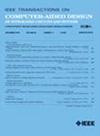SMART: Graph Learning-Boosted Subcircuit Matching for Large-Scale Analog Circuits
IF 2.9
3区 计算机科学
Q2 COMPUTER SCIENCE, HARDWARE & ARCHITECTURE
IEEE Transactions on Computer-Aided Design of Integrated Circuits and Systems
Pub Date : 2025-03-11
DOI:10.1109/TCAD.2025.3549701
引用次数: 0
Abstract
Subcircuit matching in a large-scale analog circuit is a fundamental problem in VLSI computer-aided design (CAD). Existing approaches suffer from a poor scalability issue for a large-scale analog circuit. In this article, we propose a graph learning-boosted subcircuit matching framework for large-scale analog circuits named SMART, consisting of two stages. In the first stage, we customize hypergraph neural networks to map circuit topology for embedding space. Then, coarse subcircuit recognition is directly performed in the embedding space by geometric relations between the query circuit and all candidate subcircuits within the target circuit. In the second stage, a radial matching method, including device attribute matching, connection relationship matching and uniqueness-based matching, is customized to perform fine matching and obtain matches between interconnections and devices in the query circuit and candidate subcircuits. Experimental results show our SMART can outperform state-of-the-art search-based method VF3 and learning-based method NeuroMatch, and achieve the fastest speed. Specifically, using our framework for subcircuit matching can achieve up to大规模模拟电路的图学习增强子电路匹配
大规模模拟电路的子电路匹配是超大规模集成电路计算机辅助设计(CAD)中的一个基本问题。现有的方法在大规模模拟电路中存在扩展性差的问题。在本文中,我们提出了一个基于图学习的大规模模拟电路子电路匹配框架SMART,该框架由两个阶段组成。在第一阶段,我们自定义超图神经网络来映射嵌入空间的电路拓扑。然后,根据查询电路与目标电路内所有候选子电路之间的几何关系,直接在嵌入空间中进行粗子电路识别。第二阶段,自定义一种径向匹配方法,包括设备属性匹配、连接关系匹配和基于唯一性的匹配,对查询电路和候选子电路中的互连与设备进行精细匹配,获得匹配结果。实验结果表明,我们的SMART算法优于最先进的基于搜索的方法VF3和基于学习的方法NeuroMatch,并且速度最快。具体来说,使用我们的子电路匹配框架可以在轻微精度损失的情况下实现高达135倍的加速,在保持100%精度的情况下实现高达7倍的加速。
本文章由计算机程序翻译,如有差异,请以英文原文为准。
求助全文
约1分钟内获得全文
求助全文
来源期刊
CiteScore
5.60
自引率
13.80%
发文量
500
审稿时长
7 months
期刊介绍:
The purpose of this Transactions is to publish papers of interest to individuals in the area of computer-aided design of integrated circuits and systems composed of analog, digital, mixed-signal, optical, or microwave components. The aids include methods, models, algorithms, and man-machine interfaces for system-level, physical and logical design including: planning, synthesis, partitioning, modeling, simulation, layout, verification, testing, hardware-software co-design and documentation of integrated circuit and system designs of all complexities. Design tools and techniques for evaluating and designing integrated circuits and systems for metrics such as performance, power, reliability, testability, and security are a focus.

 求助内容:
求助内容: 应助结果提醒方式:
应助结果提醒方式:


